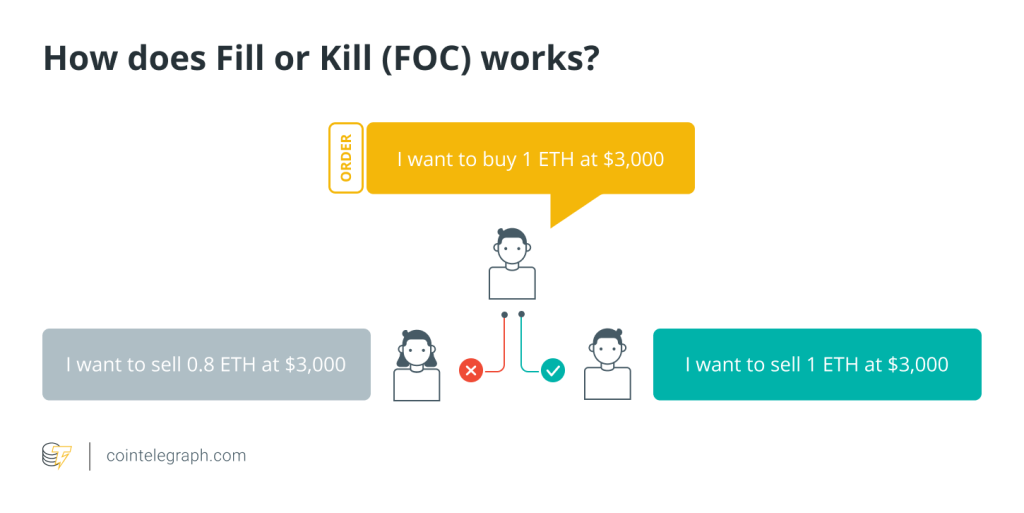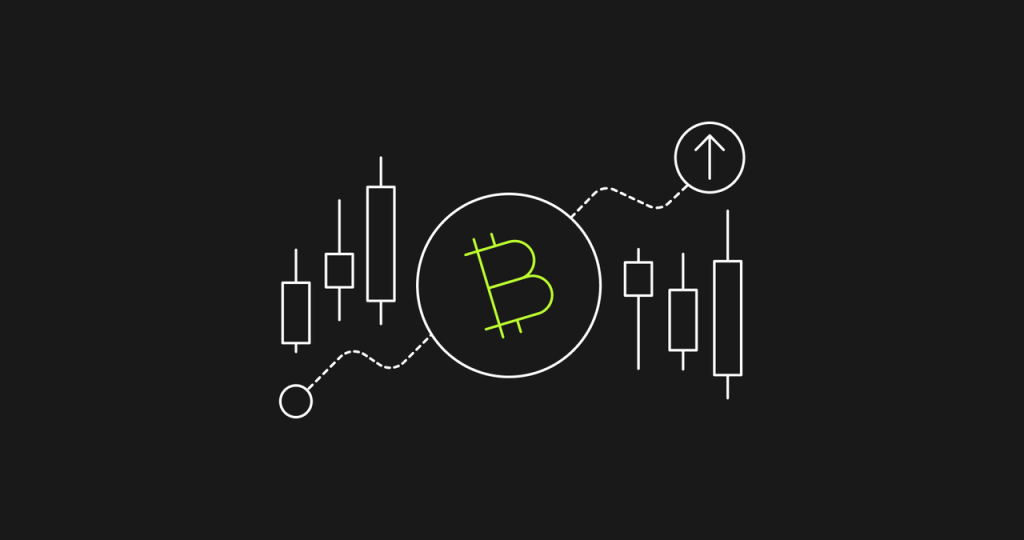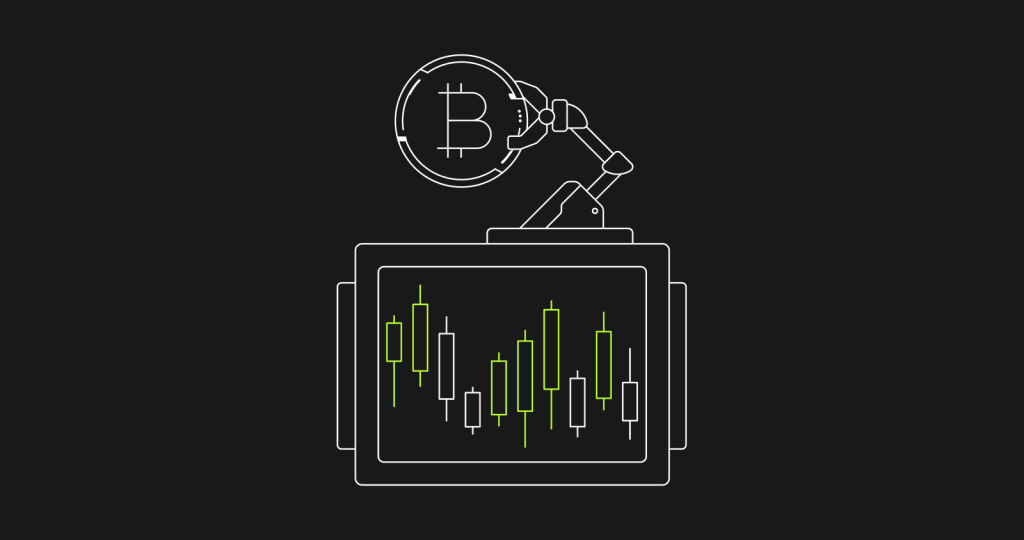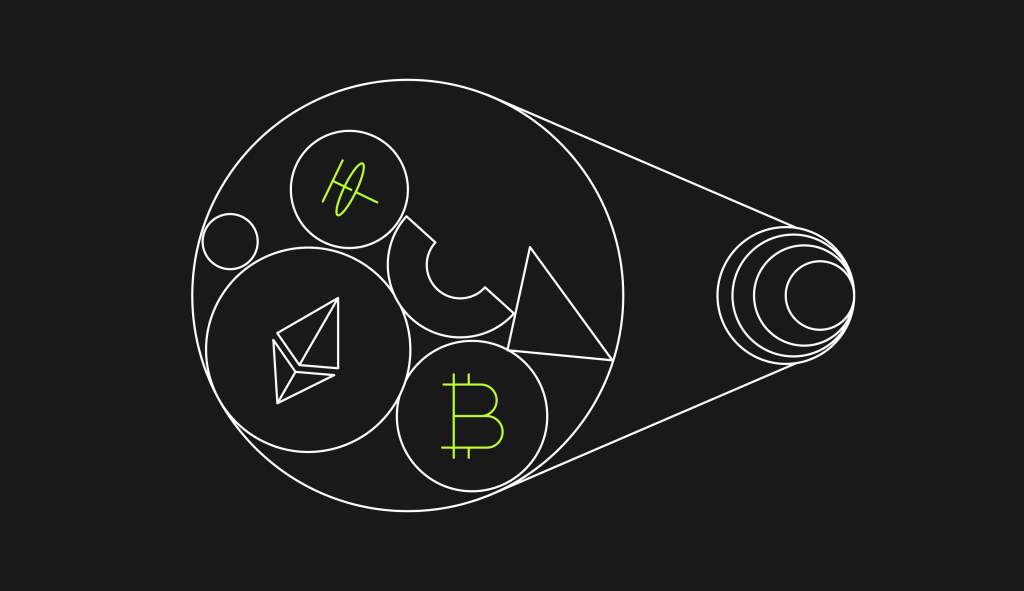Crypto trading basics: A beginner's guide to cryptocurrency order types


Trading cryptocurrencies has become one of the most profitable activities in fintech. It can be very speculative, and knowing what trading tools are available might help investors make better and less risky decisions.
This article gives an overview of different order types in crypto, similar to orders types used in stock trading. Still, they might be employed differently due to the peculiar crypto market structure and conditions.
In the early days of cryptocurrency, exchanges were generally referred to as the 'wild west' due to the propagation of unregulated and risky businesses, culminating in the infamous MtGox hack of 2014.
After Satoshi Nakamoto launched Bitcoin (BTC) in 2009, there were limited ways to trade the cryptocurrency with fiat currencies or goods. Mostly, trades would happen peer-to-peer (P2P) through the popular Bitcoin forum Bitcointalk.
These were risky operations, but Bitcoin was worth nearly nothing back then, so trusting a stranger did not matter as the money at stake was very little when compared to today.
Twelve years later, highly regulated and more reliable exchanges have taken over the crypto scene globally by complying with strict Know Your Customer (KYC), Anti-Money Laundering (AML) and Counter-Terrorism Financial (CTF) laws.
The cryptocurrency exchange market is finally worth billions of dollars, with exchanges collectively executing over $50 billion in daily trades.
Nowadays, cryptocurrency exchanges compete to offer traders a range of tools to make the best trading decisions to maximize profits and contain losses.
The different order types for cryptocurrency trading are designed to help traders execute an order to buy or sell an asset at the time and price that best suits them while reducing costly mistakes.
With the advent of the internet and automated systems, ordinary retail traders in the crypto space can keep their buying and selling activity under control with no third parties involved, all while processing orders with extreme ease nowadays.
Long gone are the days when trading consisted of a series of actions and processes that could take hours, if not days, to complete.
Before going through the different cryptocurrency exchange order types, we look at order books that define the order visibility and how it ranks in the market.
What is an exchange order book?
An order book is simply a separated list of buy (bids) and sell (asks) open orders for a specific trading pair. It can be identified as a marketplace that anyone can join by placing a bid if they want to buy an asset or asking for a price if they're going to sell it.
The open order stays in the order book until it's canceled or someone accepts the bid or agrees to pay the asking price for the specific asset in the case of a sale.
Each trading pair, like BTC/USD or BTC/Ether (ETH), will have its order book.
What are the common crypto order types?
Different order types allow traders to buy or sell a cryptocurrency with a lot of flexibility, whether they want to target a specific selling or purchasing price or define the timing of the transaction.
Orders can live in a spot market where cryptocurrencies are traded for immediate execution or in a futures market where contracts are able to establish that an order is fulfilled at a future date.
Stop orders would enable traders to choose at which price the order should execute and are usually set to minimize losses if the price of an asset drops considerably.

Market orders
A market order is an instruction by a trader to buy or sell a cryptocurrency at the best available price in the crypto market and provide instant execution. It is considered the simplest and most basic type of crypto order.

Pros
Crypto market orders are perfect for traders who do not wish to wait for a target price and, unlike all other orders, which are primarily based on the prospect that a price will hit the target, market orders are guaranteed to be fulfilled.
A crypto market order automatically matches the best available limit order in the order book, removing liquidity from it. Therefore, it's considered a taker order, and it's the reason why exchanges usually charge market orders a higher fee. Since market orders are executed instantly, they cannot be canceled, unlike limit and stop orders.
Cons
Slippage is a significant drawback of market orders. It occurs when large market orders usually match multiple orders in the order book and may be susceptible to unfavorable changes in price. In simple words, slippage happens when an order fills at a price lower than expected.
It usually happens because there isn't enough liquidity to fill a large order at the desired price, so the next available lower price will fill in. If the order value is not very big, a price difference might not even be noticeable. However, if the size of the trade is considerable, slippage may represent a big issue.
Exchange liquidity can be a real issue in cryptocurrency markets, which has prompted many experts to believe that some volumes declared might be faked or inflated.
Generally, traders who would like to control their trading strategy better might consider using limit orders.
Limit orders
A crypto limit order is an instruction to buy or sell a cryptocurrency only at a price specified by the trader. It is best suited for the trader who can patiently wait for a price target to be reached.

Pros
Unlike market orders, crypto limit orders give more flexibility with the asset price and amount. They let traders set a minimum price and will only perform at that price or higher.
Investors will be able to either take another trader's open order on the exchange or place an open order that someone else might take.
The flexibility of limit orders allows traders to have better control and minimize their risk while granting them the option of staying away from watching the market constantly.
Cons
Limit orders are only fulfilled if the designated price is reached and, even in that case, execution is not guaranteed, or there's a chance they can even end up being filled only partially. Orders are first ranked by price and then on a first-come-first-serve basis. Therefore, once the price is hit, the order might still not be executed because other previously placed orders of the same amount are waiting to be filled.
A good practice would be to set the limit price a little above the selling price or below the buying price of psychological levels. As others might use this tactic too, it's helpful to look at the order books to spot the prices that do not reflect many orders to have a better chance to execute it.
Limit orders are considered “makers” in that an open order is immediately placed into the order book and injects liquidity into the market.
Limit order vs. stop order
A stop order is significantly different from a limit order because it includes a stop price meant only to trigger an actual order when the set price has been reached. Moreover, the market can see a limit order, while a stop order can't be seen until triggered.

Stop orders
A stop order is set to buy or sell a cryptocurrency at the market price once it has hit the stop price. In that case, the order becomes a market order and is filled at the next available market price.
This order type helps traders protect profits and limit losses. However, just like limit orders, they might not execute even if the price target is met.
Stop orders can be market or limit orders. A stop market order is based on the condition that a price hits a predefined target (the stop price), and in that case, it executes immediately. Stop-limit orders are slightly more complex and require a further explanation that we are providing here.
Stop-limit orders
A crypto stop-limit order is an advanced order type. It's a combination of a stop order and a limit order, and it's used to minimize risk. Traders often use stop-limit orders to secure profits or to curb downside losses.
A stop-limit order is not instantly executed and involves two layers of prices:
-
A stop price converts the order to a buy or sell order;
-
A limit price defines the highest price traders are willing to pay to buy the cryptocurrency or the lowest they are eager to pay in case of a sale.
Stop-limit orders are similar to limit orders, but they grant even more flexibility to the trader.
In essence, a stop-limit order will buy or sell the cryptocurrency once the stop price is reached, and the trading activity continues until the whole order is filled. The benefit of specifying a stop price is that the order will not be fulfilled at a worse price, allowing traders to have precise control over how their order is executed within the exchange.
For example, a stop price to buy Bitcoin is set at $60,000, which is the price that will trigger the order. If the trader believes the price might increase, they can set a maximum limit price of $60,100, which will be the top price the asset will be bought at. A stop-limit buy can help traders control the price they pay once they've established the maximum acceptable price.

Similarly, let's imagine a stop price to sell Bitcoin is set at $50,000. This will be the price the sell order will trigger, and if the trader believes the price might move down considerably, he can set a minimum limit price of $49,500, which will be the lowest price the asset will be sold to avoid excessive losses.
Pros
A stop-limit sell order helps traders define the minimum price they are willing to accept from a buyer. If the entire order isn't completed, the remaining balance is then placed as an open order at the price of $49,500.
Stop limit orders are particularly effective in cryptocurrency markets because they help control the high volatility that characterizes them, thereby assisting the trader in mitigating risks.
Cons
Unlike limit orders, stop-limit orders are not automatically placed on the order book. As a matter of fact, only when a predefined price is hit will the order be placed in the order book and seen by everyone. Just like limit orders, stop-limit orders might not execute or might fill only partially.
Stop-loss orders
A cryptocurrency stop-loss order is an essential tool in risk management because it automatically closes a position when the price reaches a predefined level.
Pros
Like stop-limit orders, also stop-loss orders are beneficial to the highly volatile cryptocurrency market.
They can be particularly efficient to help manage a cryptocurrency portfolio, especially for day-trading activities, because they allow traders to stay away from their monitors and focus on something else. Like stop-limit orders, they have two layers of price, a stop price and a loss one.
For example, if traders want to sell a cryptocurrency and the trends scenario is bearish, meaning that the price seems to be moving down considerably, the stop price can be set at $50,000 and the loss at $49,500 to contain a loss.
Experienced traders typically move the stop loss higher or lower depending on whether the market moves up or down. Setting up their trading management structure according to how the market behaves will help traders contain loss damages.
Cons
The downside of stop-loss orders is that their balances get automatically locked and cannot be used for any other type of transactions or orders. Allocating some funds to the stop-loss order and some to other operations might help to prevent this issue.
Also, since a stop-loss order is not guaranteed to be fulfilled entirely when the market order is triggered, stop-loss orders are vulnerable to slippage, just like market orders.
What's the time in force for orders?
The time in force instruction defines the length of time a crypto order will remain active before it is executed or expires. Setting up an order according to specific time parameters allows traders to be consistent with the cryptocurrency market structures and forecasts, especially if they follow important trading indicators like moving averages which are very time-sensitive.
Types of time in force orders
-
Good 'til canceled (GTC): This cryptocurrency order will be placed on the order book and remain valid until it's executed or canceled.
-
Immediate or cancel (IOC): Crypto traders can place this order for immediate execution. If it is not instantly filled, it will be automatically canceled and removed from the order book. This type of order allows the trader to allocate a minimum amount available for immediate fill, and any remaining portion that is not filled will be automatically canceled.

-
Fill or kill (FOC): Unlike the previous IOC order, fill or kill implies that the cryptocurrency order will only be fulfilled if the entire amount can be matched. If that does not happen, it will be canceled automatically.
This type of order is designed for crypto traders who do not want a partial fill if it leaves them with too small a position on an asset. Failure to fill the entire order upon immediate submission to the market causes the system to cancel the order in its entirety.

Try using the orders yourself
If you want to make a quick crypto investment or make crypto trading a part of your daily routine, you need to be familiar with the most frequent order types, as described above. Knowing these fundamentals will make it easy for you to investigate all of the order possibilities available on exchanges.
To learn more about trading digital currencies, please read our guide: How to trade cryptocurrencies: The ultimate beginner's guide.






… [Trackback]
[…] There you can find 78642 more Info to that Topic: x.superex.com/academys/beginner/3264/ […]
… [Trackback]
[…] Information to that Topic: x.superex.com/academys/beginner/3264/ […]
… [Trackback]
[…] Find More on to that Topic: x.superex.com/academys/beginner/3264/ […]
… [Trackback]
[…] Find More Information here to that Topic: x.superex.com/academys/beginner/3264/ […]
… [Trackback]
[…] Here you will find 70892 additional Info on that Topic: x.superex.com/academys/beginner/3264/ […]
… [Trackback]
[…] Here you can find 80288 more Information to that Topic: x.superex.com/academys/beginner/3264/ […]
… [Trackback]
[…] Find More on that Topic: x.superex.com/academys/beginner/3264/ […]
… [Trackback]
[…] Find More Information here on that Topic: x.superex.com/academys/beginner/3264/ […]
… [Trackback]
[…] Info on that Topic: x.superex.com/academys/beginner/3264/ […]
… [Trackback]
[…] Here you can find 41234 more Info to that Topic: x.superex.com/academys/beginner/3264/ […]
… [Trackback]
[…] Find More here on that Topic: x.superex.com/academys/beginner/3264/ […]
… [Trackback]
[…] Read More on on that Topic: x.superex.com/academys/beginner/3264/ […]
… [Trackback]
[…] Info on that Topic: x.superex.com/academys/beginner/3264/ […]
… [Trackback]
[…] Here you can find 41143 more Info to that Topic: x.superex.com/academys/beginner/3264/ […]
… [Trackback]
[…] Here you will find 2876 additional Information on that Topic: x.superex.com/academys/beginner/3264/ […]